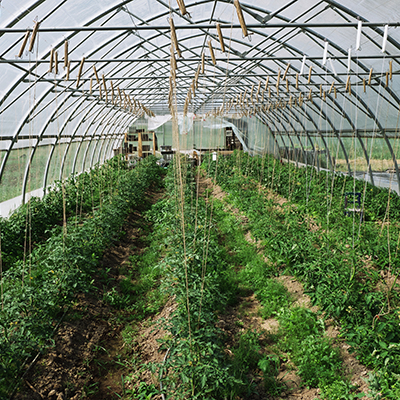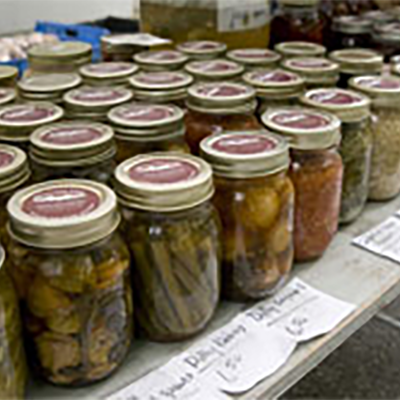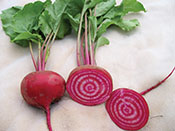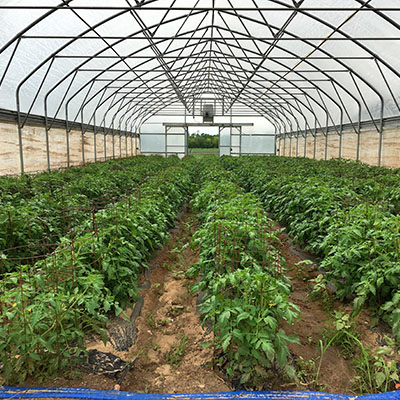Growing for Market in partnership with Johnny's Selected Seeds has created a library of expert information about growing and selling vegetables and flowers. Links in the article will take you to johnnyseeds.com.
Subscribe to Growing for Market for more great ideas about growing and marketing!
For more topics in the series, click on Market Farming Basics in the left column.

Expand your market by growing a wide selection of peppers. Hot and sweet peppers are used in cuisines around the world so the more types of peppers you offer customers, the more likely you are to find buyers. Think of all the cuisines that use peppers: Mexican, Southwestern, Cajun, Indian, Thai, Italian, Ethiopian...the list goes on and on. By growing a diversity of peppers, you are likely to attract a diverse customer base.
 Johnny’s
has more than three dozen varieties of peppers, so you can choose
specialties that meet the demands of your customers. You can cater to
specific ethnic groups that may have trouble finding their favorite
peppers in supermarkets. You can encourage customers to try new peppers
by providing recipes and preparation suggestions.
Johnny’s
has more than three dozen varieties of peppers, so you can choose
specialties that meet the demands of your customers. You can cater to
specific ethnic groups that may have trouble finding their favorite
peppers in supermarkets. You can encourage customers to try new peppers
by providing recipes and preparation suggestions.Peppers have a long and illustrious history. Native to Central and South America, they were in cultivation by the Aztecs when the Spanish explorers arrived. The Spanish, who were hoping to find a new source of expensive black pepper, realized that the local hot peppers would be a good substitute, so they brought them back to Spain. By the first half of the 16th century, they had spread to Italy, France, and Germany and within a few more decades to India and the Balkans. The English re-introduced them to America.
Most of the peppers in commerce today are of the species Capsicum annuum. They are broadly divided into sweet and hot peppers — though there may be the occasional crossover. With the Spanish heirloom Padron, for example, one out of 20 fruits will be hot, the rest mild. Sweet peppers include bell peppers, pimentos, cone-shaped frying peppers, and long, lobed Shishito types. Weather can often produce unexpected heat or mildness in some peppers, with hot weather generally leading to hotter peppers. Another important pepper species is Capsicum chinense, with Habanero being the best-known variety.
Hot peppers, known as chile peppers, are categorized by their capsaicin content — their heat. They are ranked on the Scoville Heat Unit scale, on which a bell pepper has 0 Scoville Heat Units, a Numex Joe E. Parker has 4,500, a Serrano 25,000 and a Habanero 150,000-200,000. The hottest pepper known is the Bhut Jolokia, a C. chinense pepper from India that scores 1 million Scoville Heat Units.
Shop for Peppers by Heat Scale
 |  |  |  |  |
Sweet and hot peppers are grown the same way. They should be sown inside or in a greenhouse 8 to 10 weeks before you plan to set them out. Heat lovers from the start, they require a soil temperature of 80-90°F/27-32°C to ensure fast germination. After the seeds germinate, they should be transplanted into 2” cells or pots so that they can develop strong root systems before planting. The ideal seedling for planting outside has buds but no open flowers.
Peppers should not be transplanted outside until the soil and weather have warmed. In cooler climates, they do best on plastic mulch covered with row cover on hoops until the weather gets hot. Plants should be watered in with a high-phosphorous solution.
The first peppers should be picked as soon as they reach full size to encourage further fruit set. After that, fruits can be left to ripen to their mature colors of red, yellow, or orange. Peppers are packed with antioxidants and vitamins, and they are very low in calories.
Whether your customers like their peppers hot or sweet, nearly everyone buys peppers.
Visit Johnny's Selected Seeds for more free information about growing produce, herbs, cover crops and flowers.
Subscribe to Growing for Market for the latest news and ideas.
Reprinted from JSS Advantage January 2012




 August can be a busy month. Summer crops are at their peak and fall crops need attention. It's time to look ahead to fall and winter markets. Yet, it may still be so hot you just don't want to do anything! We'll suggest some practical ideas and, we hope, provide some encouragement to keep you going.
August can be a busy month. Summer crops are at their peak and fall crops need attention. It's time to look ahead to fall and winter markets. Yet, it may still be so hot you just don't want to do anything! We'll suggest some practical ideas and, we hope, provide some encouragement to keep you going.

